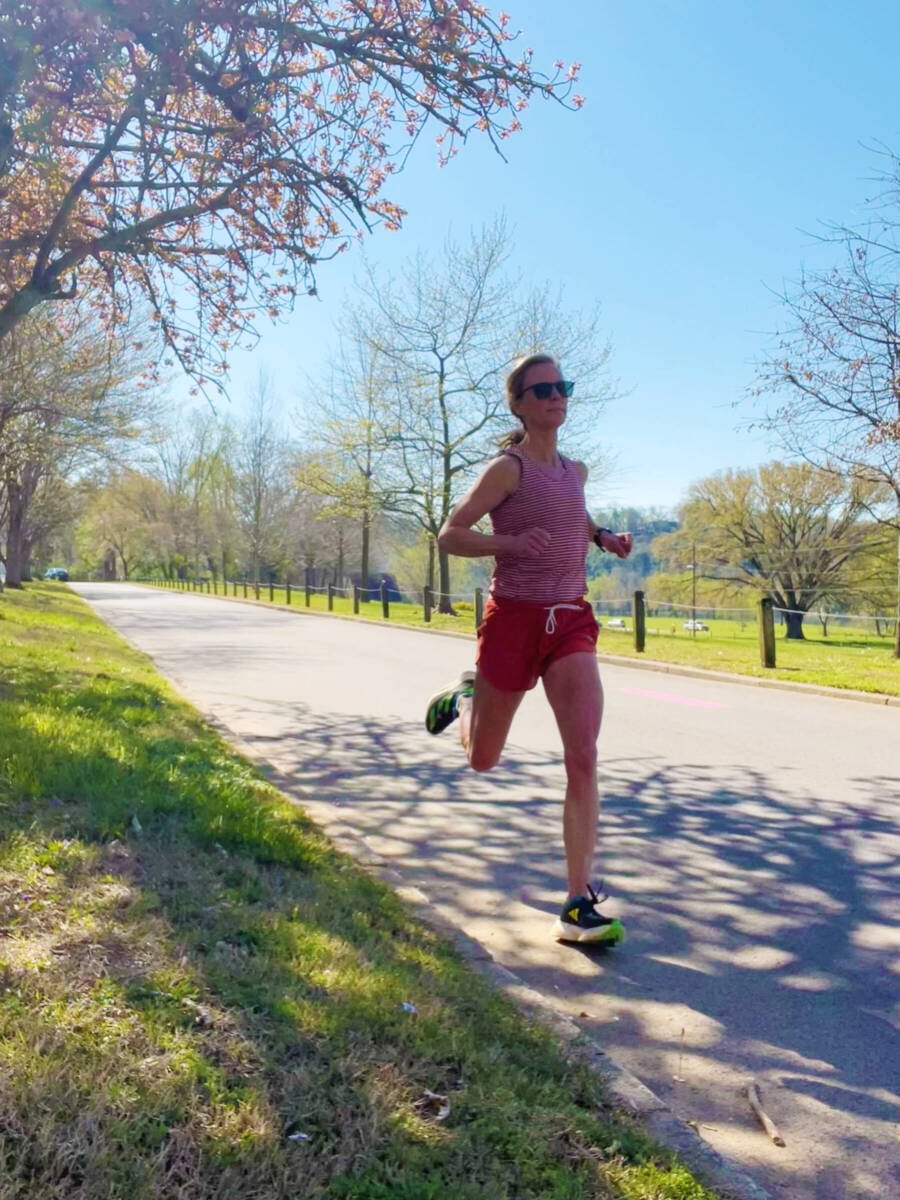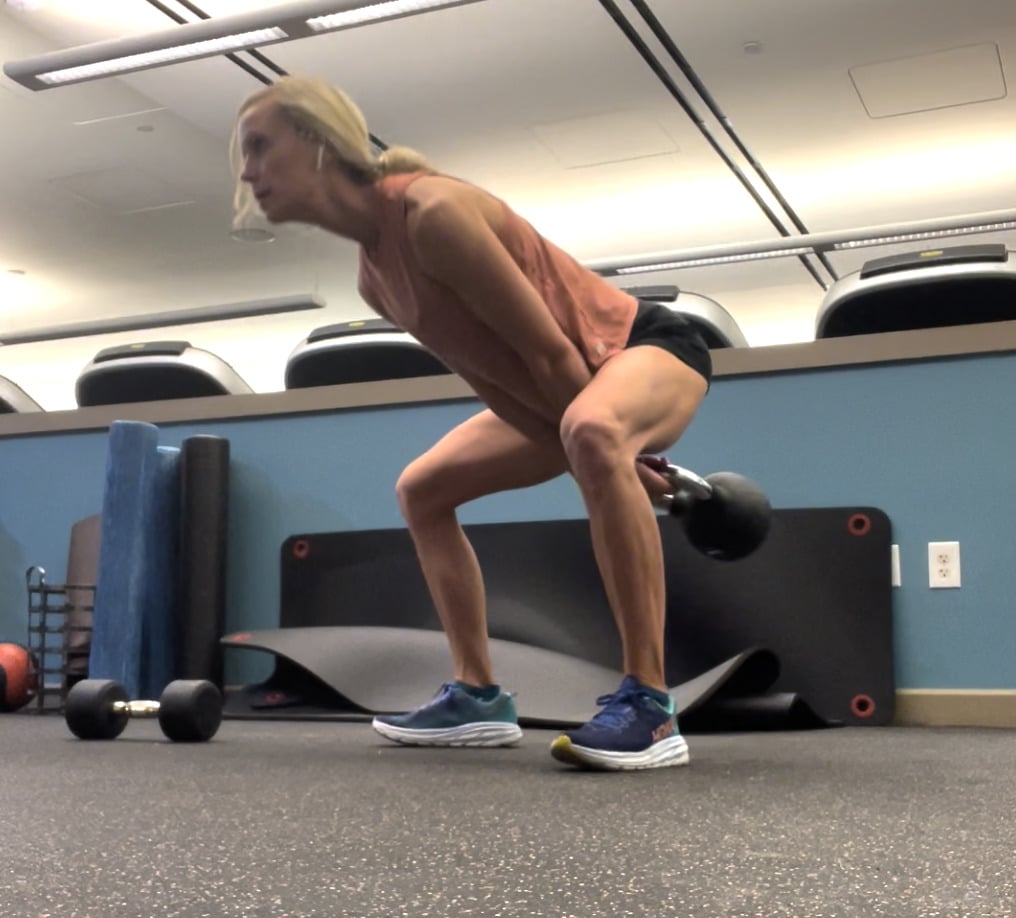How to Run Strides (& Why You Should)
Strides work wonders in improving neuromuscular fitness, running form, running economy, and strengthening your body. Research shows that running strides (also called accelerations, striders or stride-outs) a couple of times a week can improve running performance more than most “extra” things you do other than straight running. Strides are not sprints. They are accelerations of speed over the distance of about 100 meters. Read on to learn how and when to do them.

When I’ve come back from long layoffs due to running injuries, strides have worked wonders in helping my body remember how to run efficiently. I can literally feel my body mechanics improve. When I came back from a hamstring tear, I could feel my right leg exploring how to pick up as fast as my left (uninjured) leg. I can feel the power even out. My athletes feel this too when we start incorporating strides into their running.
Running strides give you so much bang for your buck. They aren’t just flat out sprints but are a gradual acceleration over short distances such as 20 to 30 seconds or 100 meters. (They are also sometimes called striders or stride-outs).
However, you can do strides wrong so that you don’t get benefits and even get injured. I want to help you avoid that.
Skip Ahead
Buckle up and let’s go!
How to Run Strides
You run strides on any flat straightaway path. Here’s how to do running strides:
- Find a flat, straight surface about a football field’s length or 100 meters. If you don’t measure your strides, you can aim to run strides for about 25 seconds.
- Begin to pick up speed so that you are running at 95 percent of your top speed at about 40-50 meters in.
- Hold your top speed for about 5 seconds.
- Decelerate to a jog.
- Focus on standing tall, with your arms swinging by your sides, legs under your body, hips straight, and a quick turnover on your feet. You may even run on your toes to pick up speed.
- Stop, wait a full minute, or until fully recovered.
- Then, repeat (usually 4-6 times at the end of a run or before a workout).
It’s important to remember that the purpose of strides is not to strengthen your cardiovascular system. The purpose of strides in running is to improve your neuromuscular system. So proper form is paramount. Thus, shortening the recovery time in which you are running strides while still fatigued provides zero benefits.
It’s also important to remember that strides are not sprints. With your strides, you gradually accelerate your pace so that you are running close to top speed in the middle (for less than ten seconds), and then decelerate to a jog at the end. Think of strides as a bell curve where you are at the height of your speed only in the center.
When to Run Strides
Aim to run strides after an easy run a couple of times a week. Here’s how to introduce running strides into your running training schedule:
- After you’ve been running consistently for 3 days or more a week for at least 6 weeks, you can introduce running strides into your running.
- Start strides two days a week after the end of an easy run, on nonconsecutive days.
- Complete your easy run.
- Find a straight, flat surface to run your strides.
- Start with 4 strides.
- Remember to focus on form and fully recover in between.
- After a couple of weeks of strides, you can add one and do 5, then 6.
- As your training progress, you can run strides after a warm-up before a speed workout, tempo run, or on race day prior to lining up.
- You can also try hill strides one day per week, starting with 4, in which you run about 50 meters at a progressively faster pace on a gradual incline.
Mistakes to Avoid When Running Strides
If you are incorporating strides in your running, do not do the below.
Do not:
- run strides downhill
- rush your recovery time
- sprint the whole way
- come to a sudden stop
- run with poor form
- choose an uneven or crooked path
FAQs About Running Strides
Can you run strides before a race?
Strides are also used as part of a warm-up before a hard effort or race as they loosen up the tendons, joints, and muscles.
Here’s how to run strides as a warm-up:
- Do your easy warm-up of 1-2 miles, running drills, and then perform 4 strides right before your race or workout.
- Many people do their strides on the start line of a race.
What pace should strides be run at?
There is no correct pace for strides. Instead, it’s based on your rate of perceived effort. Strides should be run at close to max effort, like a 9.5 out of a scale of 1 to 10.
Your pace for strides is closest to your mile pace. So, if you are a 6-minute miler, your stride pace will be 6 minutes, or faster.
How many strides should you do?
Start with four strides two times a week, at most four. After a couple of weeks, you can add another stride to each session. Typically, you do not do more than six strides per session.
Do not run strides if you are new to running or are recovering from an injury. You should only attempt strides after running consistently for at least six weeks.
Why should I run strides?
Strides are amazing because you get so much for just a little bit of effort (really a total of about 4 minutes a week). (See below research.)
Strides help:
- Improve running form and turnover
- Improve running economy
- Strengthen muscles and prevent injury, and
- Make you faster.
It does this by improving the connection between your brain and muscles so that when your brain tells your muscles to move, your muscles learn how to do it in the most efficient way possible, using the least amount of energy. This improves cadence and runner’s turnover, hip extension, and stride length. Strides also wake up fast-twitch muscles, making them more ready to work when you hit the ground.
Also, the fast-running creates stress on your bones, muscles, tendons, ligaments, and joints. When you recover, these structures build back faster. Strides also work as a wonderful bridge to faster running by metabolically and structurally readying the body for the intensity of fast running.
How do I run strides on a treadmill?
You can run strides on a treadmill though it is not ideal or recommended. That is because the main purpose of strides is to improve form and your form is altered on a treadmill. Also, you can’t lengthen your stride on a treadmill as you would when running fast on the ground.
When doing strides running on a treadmill its best to perform them more in the form of surges:
-
- In the last one or half-mile of your run, slow to a jog and then increase your pace quickly on the treadmill so that you are running close to top speed (but not top speed!).
- Run fast at a controlled pace for about 3-5 seconds, then decrease your speed quickly to a jog, then stop.
- Recover for a minute or so.
- Repeat 4 to 6 times.
- Each stride takes about 20-30 seconds.
Can I run strides barefoot?
Running strides barefoot is a great way to strengthen your foot muscles, ankles, and calves. But don’t jump into it!
-
- Do strides for a couple of weeks before attempting one to two strides in a session barefoot on grass, on a flat, straight surface.
- Next week, aim for up to four barefoot strides in a session.
- If you tolerate that well, aim to do one session of barefoot strides a week for benefits!
Do you run strides regularly?






I love this! Thanks for including the research, too. Sounds like I need to run some strides!
Hannah, they are a game-changer! Thanks for reading!!
This is wonderful information, thank you! Quick question: 99% of my runs are with my two kids in a stroller. Is it okay to run strides while pushing the stroller, if form is so important?
Thank you!
GREAT question, Emily! Definitely ok to do and definitely has benefits! Just go by effort and maintain control. I would start out at like 70-80 percent effort and take longer to accelerate (kind of like the description for treadmill strides). does that help?
This is super helpful, thank you so much! 🙂